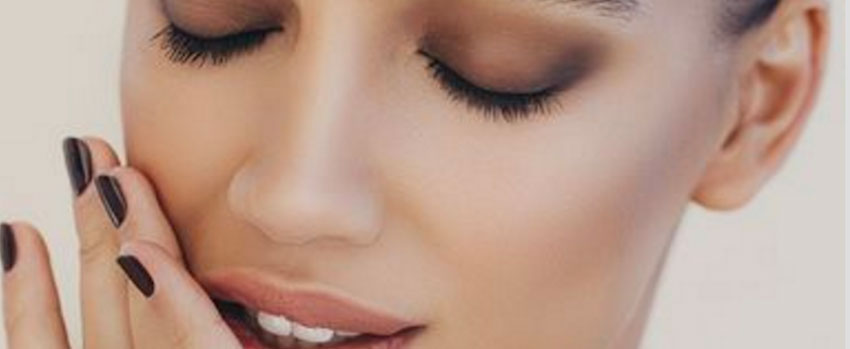
As a prominent facial feature, it’s no wonder nose jobs are now one of the most popular surgical procedures sought out by patients from all over the world. Whether it be for medical or cosmetic reasons, many patients undergo rhinoplasty in hopes that the one surgical procedure will perfect and simulate the vision they have of their perfect nose. However, after undergoing a rhinoplasty from an inexperienced surgeon, many patients are left feeling depressed and helpless as they ponder the option of undergoing another corrective surgery, known as revision rhinoplasty, to correct failed attempts made in previous procedures.
The unfortunate truth is that there are patients who’ve undergone 1, 2 and sometimes even 3 or more revision rhinoplasties in hopes of correcting previous attempts that can leave patients feeling incredibly self-conscious and with low self esteem. Changes made to a patient’s nose need to be incredibly precise and measured as a millimetre difference can lend a nose that looks more skewed or crooked. When undergoing revision rhinoplasty (or rhinoplasty in general) it is crucial patients seek the experience of a surgeon who has successfully performed revision rhinoplasties on a large amount of patients of varying ethnicities. Settling for a surgeon for economical reasons or without doing any research into their history should be avoided as the patient will ultimately need to put all their trust in a cosmetic plastic surgeon they deem able.
Revision rhinoplasties are a lot more complex then performing an initial rhinoplasty as the surgeon will need more advanced technical skill to deconstruct, rebuild and augment the nose with the possibility of the nose showing excessive scar tissue, as well as excess or lack of cartilage left by the previous surgeon. Elements Spa’s board-certified cosmetic plastic surgeon Dr. Adibfar has seen and needed to correct many of these cases. His exceptional skill, experience, attention to detail and compassion, matched with his clear understanding of each patients’ desires and expectations allow for results that are beautiful, natural looking and functional. Previous rhinoplasties can pose limitations on the surgery, and Dr. Adibfar communicates these clearly while lending results that are greatly improved. Dr. Adibfar makes certain each revision rhinoplasty is specifically tailored according to the patient’s anatomy, as well the wishes of patient, while carefully analyzing the nose and understanding the specific reasons why the patient is dissatisfied with the results of their primary or previous rhinoplasty.
Patients who’ve undergone failed rhinoplasties may display a long list of concerns. Some patients seek revision rhinoplasty because their first lent too subtle results. After healing from the initial rhinoplasty, other patients may seek revision rhinoplasty to correct any depressions, deformities and/or irregularities that leave them experiencing difficultly breathing. Some may have had the bridge of their nose removed, or maybe the tip of their nose had been raised too much or twisted or pinched. Many patients may find that their nose looks asymmetrical, as well looks different from both profiles. Nostrils may also look asymmetrical and display one opening as more wide or narrow than the other. For these and many other reasons, a patient may opt for a revision rhinoplasty.
Depending on the patient, a revision rhinoplasty may last anywhere between 3-5 hours, also depending on the need for harvesting any grafts from the rib or ear. Dr. Adibfar begins by making preoperative markings on the patient’s nose to highlight any bulges, asymmetry or poor definition to show the patient a detailed map of what areas he will be working on during the procedure. Once complete, the patient is given general anesthesia or IV Sedation o begin the surgery. A small incision is made between the two nostrils for an incision line that will appear undetectable after full healing. The skin on the nose is then lifted to expose the bone structure, cartilage and any residual scar tissue to be removed. Then depending on the patient’s nose, Dr. Adibfar will perform the procedure in a way that results in a more symmetrical and smoother nose which is then carefully sutured and bandaged. An endless number of small changes may need to be made all depending on the nose of the patient. This can also include changes to the septum as well as trimming and changing the projection of the nose’s tip.
Depending on the patient’s previous rhinoplasty, Dr. Adibfar may need to graft cartilage and sculpt it in order to correct any visible irregularities. The grafts would be taken before the patient’s nose is exposed, and would be cut from the rib’s cartilage or from inside the ear. There are no risks in having this cartilage harvested as they are from inconspicuous areas not visible to the eye and that will leave no visible sign of having been harvested after full healing. Dr. Adibfar then meticulously tailors and sculpts the cartilage into a specific shape to be placed in the nose.
Patients can expect more swelling than they would as a result of a primary rhinoplasty, as swelling is more extensive after multiple surgeries. After any initial swelling or bruising subsides, patients are able to return back to their normal daily routines and schedules.
Patients should also wait for a minimum of 1 to 2 years after a failed rhinoplasty to undergo a revision rhinoplasty as the healing and swelling reduce over time. Patients are also advised to strictly follow Dr. Adibfar’s aftercare instructions as this will also greatly help the body as it works to heal the area as swiftly and efficiently as it can.
If you’ve undergone a previous rhinoplasty, have fully healed and are still dissatisfied with the results, then booking a consultation with Elements Spa’s board-certified cosmetic plastic surgeon Dr. Adibfar may be a great idea to review your options and discuss the possibility of correcting any deformities or imperfections.
Click here to book a consultation regarding revision rhinoplasty with board-certified cosmetic plastic surgeon Dr. Adibfar.
